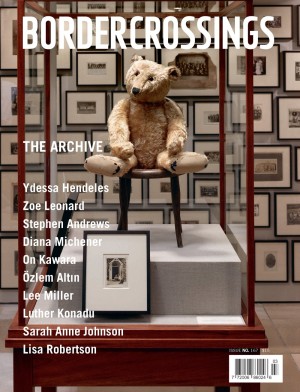“Art School (Propositions for the 21st Century)”

Steven Henry Madoff, Art School: (Propositions for the 21st Century), 2009, The MIT Press, Cambridge. Courtesy The MIT Press.
Art School (Propositions for the 21st Century) is published at a moment when pedagogy has been drawn into the thick of art-world discourse, in part because practitioners have clamoured around its potential as a process for art making. As a collection of essays, institutional snapshots, conversations and questionnaires authored by numerous artists and art educators, Art School (a well-designed new publication of MIT Press), challenges not only the current state of art schools but contemporary art making as a socially engaged practice. If there is a point of urgency that thematizes the collection, it is the question: How can a young person negotiate the local community and global art market as an ethical artist?
The subtitle “Propositions for the 21st Century” does not mislead— the authors wholeheartedly take hold of the task of proposing what is to be done in art education. The opening essay, Ernesto Pujol’s “On the Ground,” situates today’s art student deep within a post-Duchampian world where the power of the object has declined and been overthrown by the concept. Major pedagogical questions follow from this contemporary circumstance: What exactly should be taught when the art object has dematerialized? Through what means does a student activate an audience? Pujol leads us through a rigorous response to such questions, advancing a theory and discourse-heavy curriculum that espouses both multidisciplinary practices and community-based interactions. Like other contributors to this collection, he conducts an institutional critique alongside his proposals, directed both at teachers lacking art-world experience and at universities lacking vision.
Under the umbrella term “propositions,” the editor has also included artist- and curator-led projects in this volume. Removed from the top-down demands of the university system, such projects are the most difficult to define for their experimental and shapeshifting qualities. Perhaps the most adventurous of these described in the book is Clémentine Deliss’s Future Academy, an investigative, parasitic and temporary “academy” in which faculty are assembled from diverse fields. The academy plants itself somewhere (e.g., Edinburgh, Bangalore, Dakar) and gathers faculty and students. Those involved analyze local social phenomena “in terms of aesthetic vectors and values” in order to derive “complex performative and presentational modalities.” In simple terms, this means observing social exchanges in order to learn from them, aesthetically, economically, pedagogically and so forth. In Dakar, for instance, this meant observing and processing, among other things, “the mnemonic methods of Islamic primary schools, the stock exchange of second-hand clothing, and illegal taxi drivers.” Elsewhere in the book, Anton Vidokle’s essay on his well-known exhibition-as-school, unitednationsplaza (which followed from the cancellation of a similar plan for Manifesta 6), reflects on how the public can be educated and involved in art outside of degree-granting institutions. These essays on projects that blur the boundary between art making (or doing) and art education provide, more than anything, a window onto a wider horizon of what is possible.
Some propositions appear conservative in comparison and are likely to cause a negative reaction in many readers. Jeffrey T Schnapp and Michael Shanks’s “Artereality” employs a language of business— “risktaking,” “impact,” “team,” etc.—intermingled with the odd Deleuzian term, and culminates in the suggestion of extending one’s stay in school to achieve a PhD in art practice, with a focus on digital media. Elsewhere, Robert Storr’s axioms and rules for an art school are weak and thin when presented alongside the energetic experiments in pedagogy of those outside of universities.
A number of conversations between artist-educators are transcribed for this collection and appear at intervals giving some breathing room between the denser essays (which is a nice touch, if you read the book from cover to cover as I did). John Baldessari, Maria Abramovic´, Michael Craig-Martin, Hans Haacke and others bring to the table the atmospheric changes they’ve seen inside schools since the ’60s and remind us, through anecdotes, what it is like to enter an academy with the desires and limited experiences of an 18-year-old.
A utopian zeal is held at bay in much of Art School (though it emerges charmingly in “Nobody Asked You to Do Nothing/A Potential School,” a paratactic and paradoxical art-school vision produced by a graduate class at Columbia). Rather, the reaction to forces such as the ever-more rapacious American art market, the push in universities to specialization and unbounded technologies of immediacy is to bolster the critical faculties of students and to get them producing work that responds, through diverse materials and actions, to their local environment. The editor of Art School, Steven Henry Madoff, suggests, “One role for the art academy today is to reach out to the public and engage in the forum of opinion—specifically to share and propagate its accrued and continually shifting interpretations of the world that are made manifest in the knowledge embedded in its cultural productions. This is what the formation of ethics is.”
Not solely for its enlightening collection of ideas on the state of contemporary art and art education is this book of vital interest, but also as a kind of emblem of our particular moment when pedagogy has become a strategy through which to activate a frequently passive audience. As Daniel Birnbaum contends (in a Faustian dialogue with his alter ego—one of the gems of this collection—incising to the heart of the commercialized art world that “has become a bit gray and monotonous”), “school now has become something appealing.” ❚
Art School (Propositions for the 21st Century), edited by Steven Henry Madoff, mit Press, 2009. Softcover, 268 pp, $29.95.
Malcolm Sutton is currently writing a dissertation on two giants of postmodern American fiction. He is a founding member of the Toronto-based Radical Education Research Collective.

